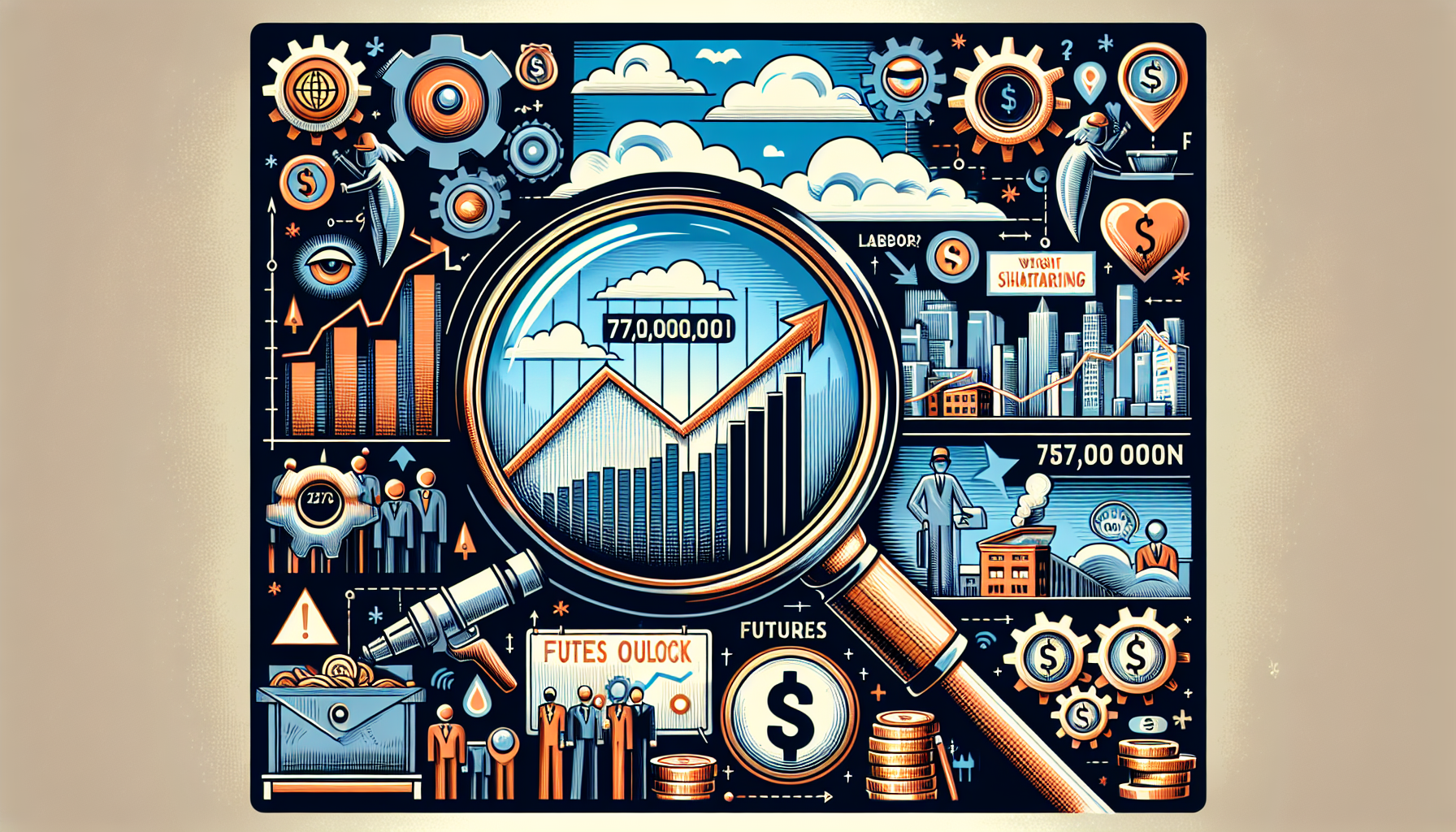U.S. Job Growth Slows: Only 77,000 Private-Sector Jobs Added in February
The U.S. economy showed signs of slowing down in February, with only 77,000 private-sector jobs added, according to the latest ADP National Employment Report. This figure fell significantly short of expectations, raising concerns about the strength of the labor market and the broader economic recovery. The report highlights challenges such as labor shortages, inflation, and shifting workforce dynamics that are reshaping the employment landscape. In this article, we delve into the factors behind the slowdown, its implications for businesses and workers, and what it means for the future of the U.S. economy.
Understanding the ADP Employment Report
The ADP National Employment Report is a monthly publication that tracks private-sector job growth in the United States. It serves as a precursor to the official Bureau of Labor Statistics (BLS) report, providing insights into hiring trends across industries. The February report revealed a sharp decline in job creation, with only 77,000 new positions added, compared to the 200,000+ jobs generated in previous months. This slowdown has sparked debates about the underlying causes and potential long-term effects on the economy.
Key Factors Behind the Slowdown
Several factors contributed to the sluggish job growth in February. These include:

- Labor Shortages: Many industries, particularly hospitality and retail, continue to struggle with a lack of qualified workers. Employers are finding it increasingly difficult to fill open positions, leading to slower hiring rates.
- Inflationary Pressures: Rising inflation has forced businesses to reevaluate their hiring plans. Higher costs for goods and services have squeezed profit margins, making companies more cautious about expanding their workforce.
- Shifting Workforce Dynamics: The pandemic has permanently altered the labor market, with many workers seeking remote or flexible work arrangements. This shift has created mismatches between job openings and available talent.
- Economic Uncertainty: Concerns about a potential recession, geopolitical tensions, and fluctuating consumer demand have made businesses hesitant to commit to long-term hiring.
Industry-Specific Trends
The ADP report also highlighted significant variations in job growth across different sectors. While some industries managed to add jobs, others experienced declines or stagnation.
Service Sector Struggles
The service sector, which includes hospitality, retail, and healthcare, was hit particularly hard. Many businesses in these industries are still recovering from the pandemic's impact and face ongoing challenges such as reduced consumer spending and labor shortages. For example, the hospitality industry added only 10,000 jobs in February, a fraction of its pre-pandemic hiring levels.
Manufacturing and Construction Show Resilience
In contrast, the manufacturing and construction sectors showed more resilience. These industries added a combined 30,000 jobs, driven by increased demand for goods and infrastructure projects. However, even these sectors are not immune to broader economic challenges, such as supply chain disruptions and rising material costs.
Technology and Professional Services
The technology and professional services sectors continued to perform well, adding 25,000 jobs in February. These industries benefit from the growing demand for digital transformation and remote work solutions. However, competition for skilled workers remains intense, driving up wages and making it harder for smaller firms to compete.

Implications for Workers and Businesses
The slowdown in job growth has far-reaching implications for both workers and businesses. For workers, it means fewer opportunities and potentially slower wage growth. For businesses, it underscores the need to adapt to a rapidly changing labor market.
Challenges for Job Seekers
Job seekers may find it harder to secure positions, particularly in industries with high competition or specific skill requirements. Additionally, the shift toward remote work has created new challenges, such as the need for digital skills and the ability to navigate virtual hiring processes.
Strategies for Employers
Employers must rethink their hiring strategies to attract and retain talent in a tight labor market. This includes offering competitive wages, flexible work arrangements, and opportunities for career development. Companies that fail to adapt risk falling behind in the race for top talent.
What Does This Mean for the U.S. Economy?
The February jobs report raises questions about the strength of the U.S. economic recovery. While the economy has shown resilience in the face of multiple challenges, the slowdown in job growth suggests that underlying issues remain unresolved.
Potential for a Recession
Some economists warn that the combination of slowing job growth, rising inflation, and tightening monetary policy could increase the risk of a recession. However, others argue that the economy remains fundamentally strong, with consumer spending and business investment continuing to drive growth.
Policy Responses
Policymakers face the difficult task of balancing inflation control with economic growth. The Federal Reserve has already raised interest rates multiple times, and further hikes are expected. While these measures are intended to curb inflation, they could also dampen job creation and economic activity.
Looking Ahead: The Future of the Labor Market
As the U.S. economy navigates these challenges, the labor market is likely to remain a key area of focus. Businesses, workers, and policymakers must work together to address the structural issues that are hindering job growth and economic recovery.
Embracing Innovation
Innovation will play a critical role in shaping the future of work. From automation and artificial intelligence to new business models, companies that embrace change will be better positioned to thrive in a rapidly evolving economy.
Investing in Workforce Development
Investing in workforce development is essential to closing the skills gap and ensuring that workers are prepared for the jobs of the future. This includes expanding access to education and training programs, as well as promoting lifelong learning.
Building a Resilient Economy
Ultimately, building a resilient economy requires addressing the root causes of labor market challenges. This includes tackling inflation, improving infrastructure, and fostering an environment that supports business growth and innovation.
